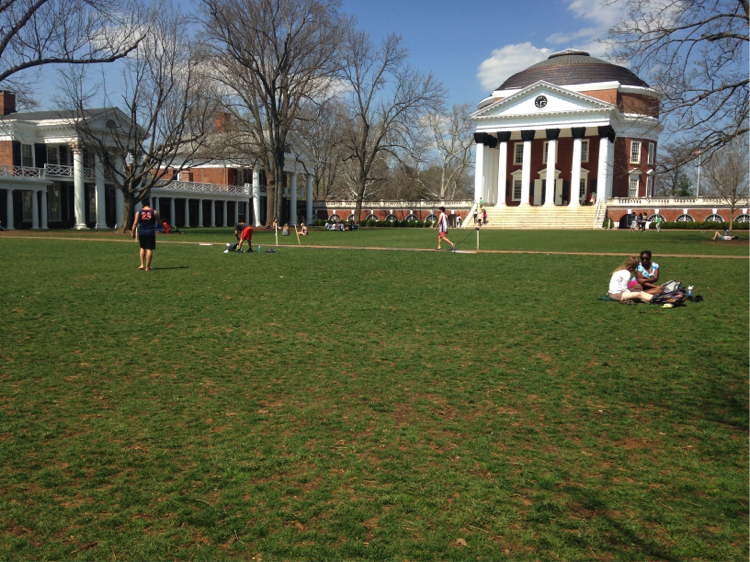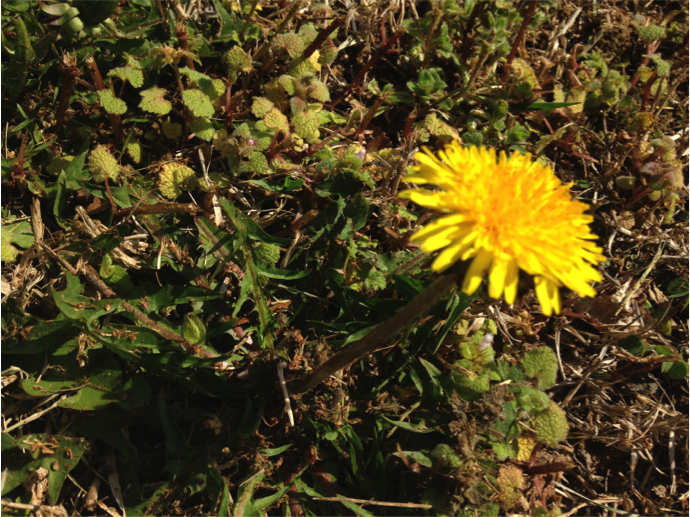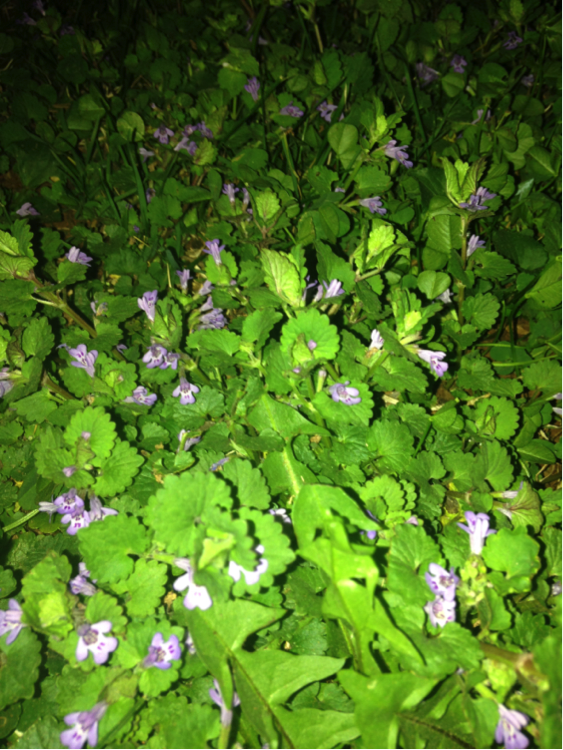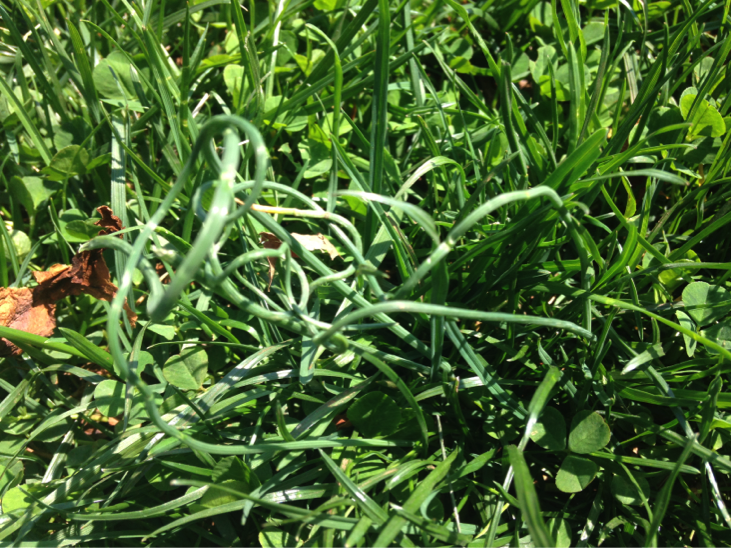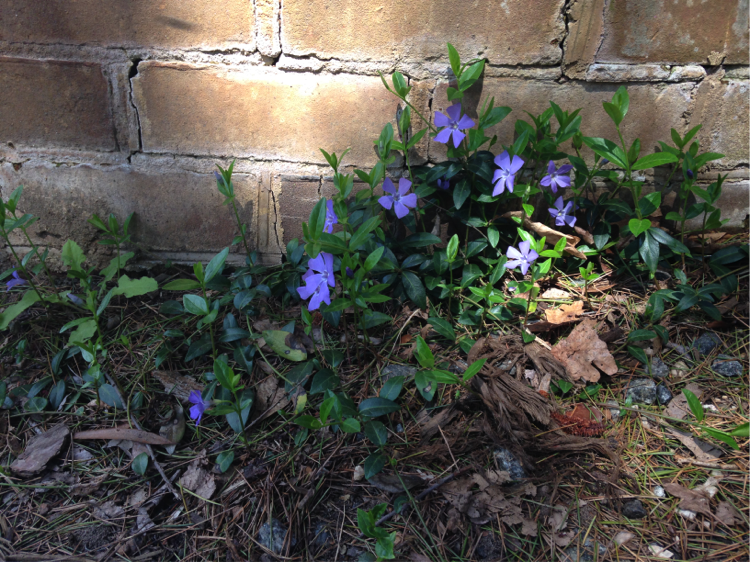My name is Lane Rylander and I am a 3rd year Architectural History major. For my Biogrounds Edible Plants project blog post, I will address the unplanted edibles that can be found on the grounds at the University of Virginia.
Jefferson’s design of the University of Virginia includes multitudes of planted edibles in the gardens and throughout the grounds. Though there are numerous ways to get a snack through the various kitchen gardens, there are still a couple of unusual plants that make up much of the University of Virginia’s natural garden. As an experiment, I journeyed around our area to find both the unplanted edibles and researched ways to enjoy our most recognizable edibles around grounds.
Unfortunately, most of UVa has been trimmed into submission but there were many more weeds and grasses to munch on than I had previously thought!
Here are a few of the edible weeds I found around UVa:
GRASSES:
Though most grass is not edible, most lawn grasses have edible parts! The roots of grasses such as Quackgrass (dried roots) and the seeds of Crabgrass (toasted) can be ground into flour and used to make muffins and cakes. These methods are a little time consuming but the grasses can be found on and around the lawn in bulk. Who knew we could think of the lawn as a food source?!
CHICKWEED:
Chickweed is one of the most common edibles around town. I found this Chickweed next to the daffodils on the University Ave. side of the Rotunda. It can be prepared Raw, boiled, and fried. It has ten white delicate petals and blooms right now during the spring.
DANDELIONS:
Dandelions are hard to find on UVa grounds but easy to find all around the area in the open fields of house lawns and median strips. This plant is extremely eatable, especially when it’s young. More mature plants become bitter and the flowers become only good for wish-making. I was surprised to see that Dandelion blossom soda is actually sold by Fentimens with Burdock. Dandelion tea, fried dandelion flowers, and salads made with Dandelion greens are also widely accepted.
GROUND IVY:
Found in many lawns around UVa as well, Ground Ivy is one of those plants that is easy to overlook. Young ground Ivy has a strong minty flavor and can be used in soups and salads. Older Ground Ivy can be dried for tea and used to help ferment and clarify home-brewed beer. The flowers are a light purple and the leaves are scalloped and heart-shaped.
ONION GRASS:
My friends and I growing up used to eat Onion Grass, which is like a wild chive, on the playground. At some point we all forgot about the weed and let it grow rampant in the schoolyard. This plant is a little bit more tough and stringy than the chives bought at a supermarket. However, they hold a similar taste and appearance. They can be used to make broth, chopped up raw, and used in soups, salads, and sandwiches. The stems are smooth and waxy to the touch and have a strong onion smell. I found this particular clump of Onion Grass next to the first Range dorm across the road from Alderman Library.
PERIWINKLE:
Periwinkle plants are not quite as tasty as many other ground weeds but they do have many medicinal uses! Periwinkles are useful in treating wasp stings, anemia, bleeding, and memory loss. Adding a teaspoon of the dried plant to boiling water and infusing for 10 minutes may make a good, healing, tea. I found these periwinkle plants in the shade of an exterior garden wall off the lawn.
There are many more wild edible plants out there, but these are a few that can easily be spotted around UVa! Remember, before eating these plants it is important to carefully compare the plant in person to the description in a plant manual, there are many look-alikes out there! The first website in the sources www.eattheweeds.com has a massive index of wild edibles complete with recipes and descriptions that are very helpful when identifying wild plants.
SOURCES:
Eat The Weeds
West Virginia Department of Agriculture
http://www.wvagriculture.org/images/Literature/Edible_Wild_Plants.pdf
Lifestyle Lounge: Benefits of Periwinkle
http://lifestyle.iloveindia.com/lounge/benefits-of-periwinkle-8497.html
Discovery News: Guide to Common Edible Plants:
http://news.discovery.com/adventure/survival/guide-to-common-edible-wild-plants.htm
Post by Lane Rylander, Third-Year, Architectural History
